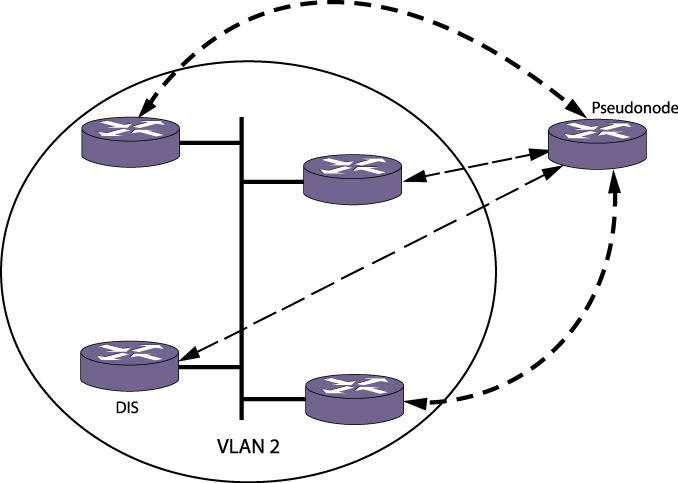Broadcast adjacencies can include two or more routers in a single adjacency. Broadcast Adjacencies in a Four-Router Network depicts a broadcast adjacency.

When broadcast adjacencies are formed, one of the routers participating in the adjacency is elected designated intermediate system (DIS). The election is determined by a DIS priority configured for each router. In the event of a tie, the router with the numerically highest MAC address wins.
A broadcast network can be considered a virtual node, or pseudonode, to which all routers have a zero-cost adjacency.
The DIS acts on behalf of the pseudonode by advertising an LSP listing all routers in the adjacency with zero-cost metric. The DIS also periodically sends a complete sequence number PDU (CSNP), which lists all LSPs in the link-state database. If a router sees that it is missing one or more of the entries, it multicasts a request for them using a PSNP. Only the DIS responds to this request by sending the requested LSPs. All routers multicast their originated LSPs as they are refreshed, and multicast periodic hellos to the network.
The default configuration creates broadcast adjacencies.

 Print
this page
Print
this page Email this topic
Email this topic Feedback
Feedback